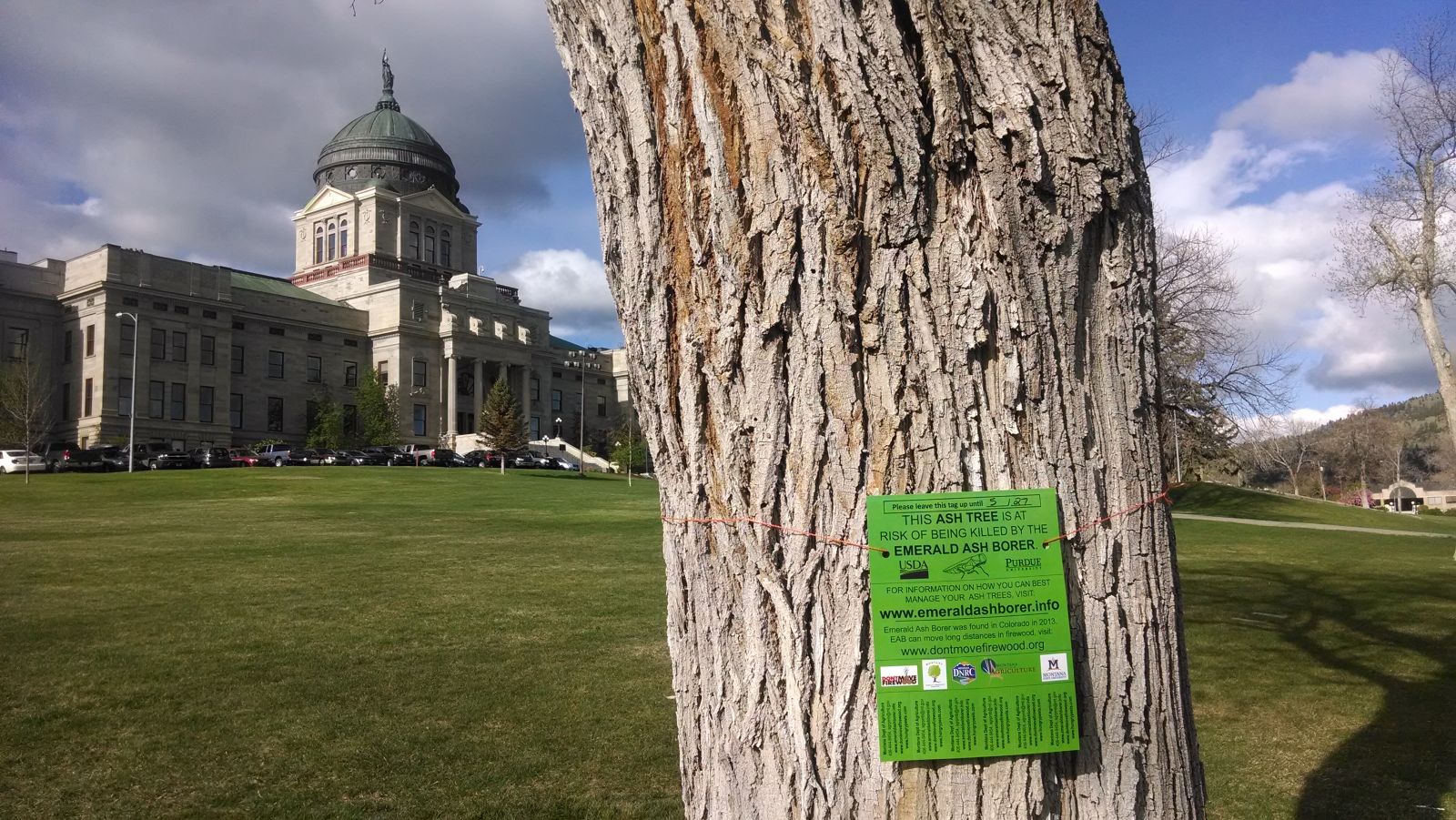Here’s an excellent example of a press release provided this morning by the Montana Department of Agriculture for Emerald Ash Borer Awareness Week:
FOR IMMEDIATE RELEASE: Monday, May 19, 2014
Emerald Ash Borer: Ash Tree Killer
Invasive Pest Could Decimate Ash Trees in Montana Cities and Urban Areas
Helena, Mont. – In an ongoing effort to increase awareness of the threat of emerald ash borer (EAB), Agrilus planipennis Fairmaire, the Montana Department of Agriculture is tagging ash trees that are at risk if the invasive pest is discovered within the state. The tagging and awareness efforts will coincide with Emerald Ash Borer Awareness Week from May 19 – 25, 2014.
“Tens of millions of ash trees are dying across the country from the emerald ash borer. While it has not been detected in Montana, our ash trees are at still at risk, especially now that EAB was discovered in Boulder, Colorado last year. Preventing the spread of the emerald ash borer from other states with known infestation and early detection will help stave off the worst impacts,” explained Ian Foley, pest management program manager for agriculture.
Capitol grounds crews and department of agriculture specialists identified ash trees in and around the State Capitol, and marked those at risk with a green tag that states: ‘THIS ASH TREE IS AT RISK OF BEING KILLED BY THE EMERALD ASH BORER.’ The tag directs people to www.emeraldashborer.info for information on the pest and management options and www.dontmovefirewood.org for information on the transportation of EAB.

“Ash trees make up roughly 30% of the public trees in Montana’s urban forests,” according to Jamie Kirby, Department of Natural Resources and Conservation urban forestry program manager. “The potential impacts from this pest cannot be ignored – millions of dollars of ash trees are at risk. Our best case scenario is early detection with collaborative efforts, frequent sampling and monitoring for signs of the emerald ash borer.”
For example, the city of Helena has around 6,900 ash trees that are at risk.
“The Montana Urban and Community Forestry Association (MUCFA) was the first western group to promote an ash branch sampling methodology recommended by Canadian Forest Service research. We have to be diligent to ensure we find EAB earlier than Colorado did if we are going to have a chance to contain its spread,” said Patrick Plantenberg, chair of the association. It was estimated that EAB had been present in Colorado for several years before it was officially detected.
The emerald ash borer spreads slowly on its own, rarely flying more than a mile from where it hatches in its lifetime. When accidentally transported by people, it can travel hundreds of miles in a single day. Infested firewood is the most common source of new infestations. Infested nursery stock, and wooden packaging may also harbor EAB larvae.
Leigh Greenwood, Don’t Move Firewood National Manager with The Nature Conservancy said, “We want people to know that when they visit Montana from out of state, they should not be bringing firewood with them. It is just not worth risking millions of dollars in damage to save a few bucks on your bundle of firewood. Montana has plenty of locally harvested firewood for sale, or visitors are welcome to gather firewood near their campsites whenever it is allowed.”
The green tags will be prominent on ash trees throughout the week. Other cities interested in coordinating an education and outreach effort in their community should contact the department’s pest management bureau at (406) 444-9454.
The Montana Department of Agriculture’s mission is to protect producers and consumers, and to enhance and develop agriculture and allied industries. For more information on the Montana Department of Agriculture, visit agr.mt.gov.



